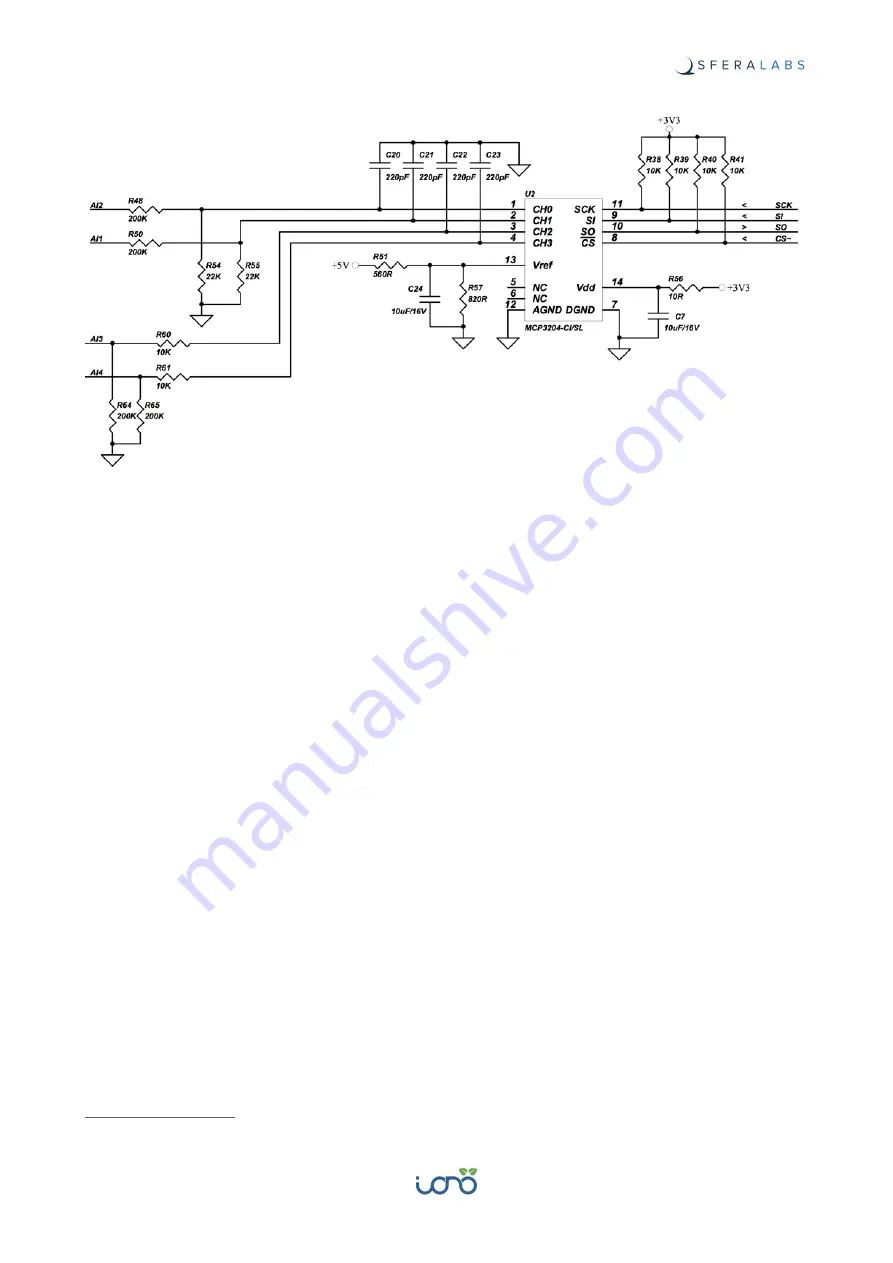
THE IONO PI A/D CIRCUIT
Thermal considerations for Iono Pi
The Raspberry Pi draws power and generates heat proportionally to CPU and GPU load.
The Iono Pi main regulator also generates heat proportionally to the total amount of
current that it has to supply to the Raspberry and, if present, external devices.
The thermal behaviour of Iono Pi is dynamic and affected by operating conditions and the
external environment temperature.
The Raspberry Pi CPU has the ability to throttle down its clock speed once a certain core
temperature is reached. This prevents CPU overheating, also limiting the temperature
inside the enclosure, when the CPU load is high for a significant amount of time.
The following charts show the thermal behaviour of Iono Pi in different conditions, in a
typical installation with the device under test installed in a standard, not ventilated DIN
cabinet:
• 35C and 45C ambient temperature (the ambient temperature is measured inside the DIN
cabinet, so it is the actual air temperature surrounding the Iono Pi enclosure)
• Raspberry Pi 3 Model B+ and Raspberry Pi 4 Model B
• very low CPU load compared to very high load (all four cores loaded at 100%).
In all cases the Raspberry Pi 4 Model B runs significantly warmer than the Raspberry Pi 3
Model B+. Unless the ambient temperature is low and ventilation is optimal, reducing the
CPU clock speed of the Pi 4 would be highly advisable.
All tests performed with Raspbian Buster Lite and, on Raspberry Pi 4, VL805 firmware version
000137ab.
27
Iono Pi User Guide





























